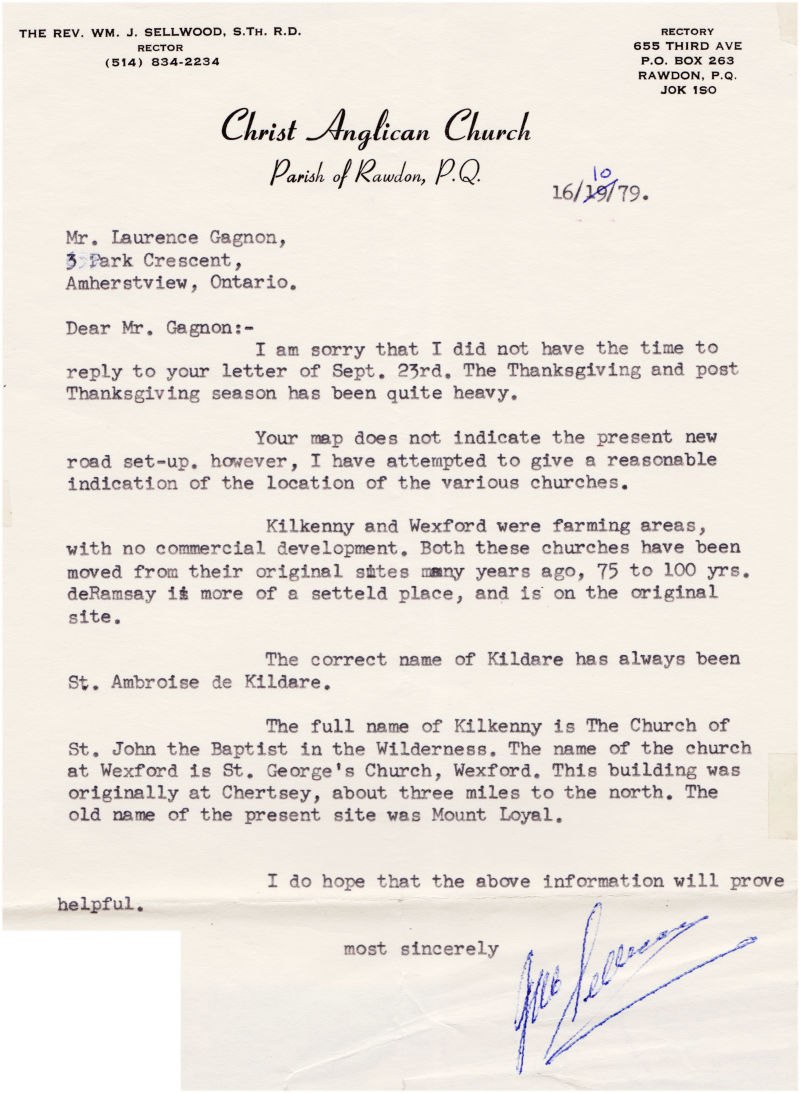This post provides a quick overview of my great-grandfather's life. My father spent a good deal of time piecing together this data - often in the course of corresponding with his uncles and aunts.
(In case the generations get confusing: George H Gagnon > George B Gagnon > LC Gagnon > DJ Gagnon ... who is assembling this account.)
Compiling this history was more challenging than most because George H became an Anglican minister in Quebec. While the prestigious big city jobs may have been beyond his reach or interest, his ability to conduct a service and communicate in French and English allowed him to minister to the many smaller Anglican congregations around the province.
His eldest son, George B - my grandfather - began his teaching career in a similar way, working as a schoolteacher when he was quite young in small settlements around Quebec.
George H Gagnon, undated photo.
Apparently wearing a wedding ring ... 1898 or later?
The text above comes from a sociological study of St Denis Kamouraska.
St Denis, A French-Canadian Parish; Horace Miner; 1939; University of Chicago.
The text below comes from a sociological study of 'Cantonville' (actually Drummondville).
French Canada in Transition; Everett Cherrington Hughes; 1943; University of Chicago.
These studies were done because there was an interest in the 'archaic' (aka well-preserved rural) French-Canadian (I'll use Canadien to include areas beyond Quebec's changing borders) culture seen at St Denis in the 1930s. Located 50 kilometers up-river from Riviere du Loup, it was essentially untouched by most English-Canadian or American influences. The Catholic church was the main consistent connection with developments in the outside world.
Because there were some 'negative outcomes' for locals who contributed particular information to the study when the unmasked St Denis study was published, Drummondville was masked as Cantonville.
The traditional large families of Canadien farmers were routinely dispersed. The lucky (usually the eldest) son chosen to inherit the family farm was the exception. It was necessary for the others to find natural resource-related work in the Canadian hinterland, menial work in the cities, or immigrate to the US in search of work. Women had fewer employment options - although an unmarried daughter might stay on the family farm to help with 'women's work'.
... The Catholic church and its institutions were often the default employers of children forced to leave the family farm. Their 'employment' would usually involve a vow of poverty.
Drummondville was an example of English-Canadian or American (textile) businesses providing factory work which suddenly enabled many Canadien farm children to work and live close to their family roots. The intriguing sociological question was to find out what happened when the two cultures came together.
George H had just retired by the time these studies were undertaken, however, it seems reasonable that they provide an objective model of the kind of environment he worked in.
Drummondville ...
Here is my father's summary of George H's key information ...
George H's early career information appears on the following pages
of the history of the Anglican Diocese of Montreal (1910) ...
Sabrevois College was originally in Sabrevois, Quebec,
(south of St Jean sur Richelieu)
but it was relocated to Montreal.
The details about the school can be found in the book linked above at its Page 225.
 |
| from: BANQ postcards online. |
My grandfather George B, added to his father's published career information, below ...
In the early 1960s, I was on at least one trip to see some of George H's former charges north of Montreal.
George B was the guide and my father (LC Gagnon) was driving.
Expert in correspondence and helping people return information to him,
in 1979 my father prepared this 'map kit' for the rector at Rawdon to complete.
As a generalization, the map locations indicate George H
had many parishes in the Laurentians north and west of Montreal,
as well as a couple to the south.
The letter from the rector appears after the maps.
* * *
To wrap up, here are a few more photos ...
Larger image files (duplicates) are provided in their
as-scanned form at the very end of this post:
1. So others (esp. family) can have good copies to work with and use.
2. It can't hurt to have some backup for the physical originals.

At the left: George H's wife Adelaide (Earle), George B.
(The others are not labelled.)
Studio Portrait:
The Reverend George H Gagnon, Adelaide Gagnon.
Doris (Dolly), Evelyn, George B. (no date).
(circa 1906)
George H; George B; Mabel (Rodger) Gagnon - George B's spouse;
Carl youngest son of George H.
Arundel, April 1926.
While George H's long career was in the 'Church of England' ... his daughter-in-law, Mabel,
had actually been taken on a special tour of English and Scottish cultural sites
before she was married. This group tour was designed to give selected school teachers
an appreciation for the splendour at the centre of the British Empire ...
so this could be imparted to their hundreds of students in the coming years.
Some of Mabel's life is covered in these posts.
* * *
 |
| from: findagrave |
George H Gagnon and Adelaide are buried
in the northern section of the Mount Royal Cemetery in Montreal.
With this 'introduction' complete,
additional posts will fill in aspects of George H's life and family.
* * *
Below are the photos in 'as scanned' large-file form.


















